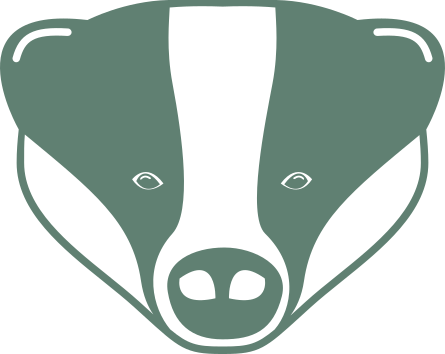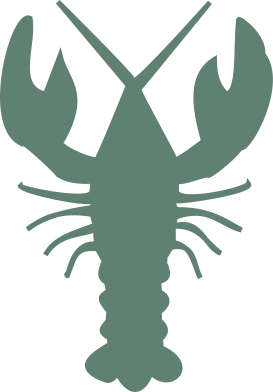Internationally important and locally distinctive wildlife and habitats
# Species
Species in the PDNP have seen mixed fortunes in recent years. Several species have increased, been found or rediscovered, but a number of species have declined or become locally extinct [1]. This mix of fortunes is reflected nationally, although the overall picture for the UK is a decline in both abundance and distribution of species [2]. The wide range of habitats in the PDNP support different assemblages of species, which are closely associated with the condition of habitats.
# Birds

many bird of prey species have populations consistently lower than the carrying capacity of the habitats available in the PDNP
The PDNP supports many bird species, many of which are of local, national or international importance. In particular, those included in the designation of the SPA (golden plover, merlin and dunlin) are of international importance for their breeding populations. Additionally, 28 PDNP species are classed as a priority under the NERC Act 2006. All birds are protected in the UK under the Wildlife and Countryside Act 1981 [3].
Systematic, PDNP-wide surveys of bird populations are not carried out, so at present we do not have a clear picture of overall trends in bird species across the PDNP. The following sections summarise what we do know. Comprehensive, systematic, long-term research is needed before drawing firm conclusions on the state of bird species across the PDNP
What are the gaps in our research & data?
- Comprehensive, systematic, long-term research across the whole PDNP for priority and locally important bird species
- Analysis of previous wader surveys to determine if there is any correlation between positive conservation works and breeding populations
- Reanalysis of surveys carried out in wader hotspots to determine population change over time (partially underway as part of the South West Peak Landscape Partnerships’ Working for Waders project)
- Survey of all birds of prey and owls, particularly in the White Peak
- Analysis of the effectiveness of bird mitigation measures (e.g. artificial nests).
# Birds of prey
Some birds of prey in the PDNP’s Dark and South West Peak moorlands are thought to have increased in number since 1990 . Despite this, many bird of prey species still have populations consistently lower than the carrying capacity of the habitats. Bird of prey numbers are less well studied in the PDNP’s White Peak, particularly more common species such as buzzard or kestrel, so comparable research is needed for this area before any broad conclusions can be drawn about the state of birds of prey.
The PDNP has notable populations of peregrine falcon, goshawk and short-eared owl. The number of breeding pairs of these birds of prey species, plus merlin and hen harrier are monitored across the Dark Peak and South West Peak as part of the PDNP Bird of Prey Initiative. So far, the numbers remain below the agreed targets, which are based on the levels present in the late 1990s, when the SPA was designated [4].
# Waders
There is a lack of comprehensive, PDNP-wide data on trends in waders. However, large scale surveys, especially in the South West Peak, have been carried out and a number of ‘wader hotspots’ have been identified across the National Park. Existing data tends to be for specific areas of the PDNP and does not show a consistent message.
The 2016 State of Nature in the PDNP report used data from five different local sources to give an overall estimate of whether five wader species were likely to be declining or stable/increasing as breeding species. Golden plover and curlew were listed as ‘stable or improving’ and lapwing, dunlin and snipe as ‘decline probable’ [1:1].
Waders are iconic birds in the PDNP. Curlew and lapwing are both priority species, with snipe being a local priority. Curlew breed in most open habitats in the PDNP, including moorland and upland pasture. Lapwing is associated with upland hill farming, nesting in a variety of open habitats. Snipe are highly dependent on rush pastures and rough ground. Management of habitats in providing the right conditions for waders is key.
# Woodland birds
There is a lack of comprehensive, PDNP-wide data on population trends of woodland birds. However, national populations of woodland specialist birds were 46% lower in 2017 than in 1970, with many of the most severe declines being in migratory species [5].
On the Stanage North Lees estate, breeding birds surveys of the woodlands are carried out annually. Most species show relative stability in populations or are increasing. Through targeted management and installation of nest boxes, pied flycatcher populations have increased each year since 2016, bucking the national trend of 43% decline [6]. In 2019, 120 pied flycatcher chicks fledged from 25 boxes.
# Moorland birds
The Moors for the Future partnership has carried out systematic surveys of the Peak District moorlands in 2004 and 2018 (results currently unavailable).
It appears there are mixed fortunes for the moorland bird assemblage, however, where targeted conservation and restoration work is occurring, many species can remain stable or increasing; particularly important in the context of national declines. The South Pennine Moors SPA is designated for its nationally important population of golden plover. The RSPB found that golden plover had increased threefold on areas where blanket bog had been rewetted [7]. It also found that dunlin numbers had doubled per square kilometre, but up to threefold in rewetted areas [7:1].
However, there is a different picture for twite. The South Pennine Moors SPA holds a significant proportion of the English population, and is estimated to have declined by 80% between 1990 and 2000 [8]. The main cause of decline is likely to be the loss of hay meadows. These findings highlights the importance of habitat restoration and maintaining key habitats to population numbers of our key moorland bird species.
On the Eastern Moors estate, numbers of whinchat have defied the national trend (a 57% decline [6:1]) and increased from 25 to 60 pairs between 2010 and 2015. Similarly, ring ouzel increased from 4 to 7-8 pairs on the Burbage Moors between 2010 and 2015. Both sites are managed by conservation partnerships and/or organisations, which suggests sympathetic land management is a key driver. On the Stanage North Lees estate, numbers of ring ouzel appear stable thanks to close working between the PDNP Authority and the British Mountaineering Council to locate territories and nests and put up signs to alert rock climbers to their presence.
Black grouse were lost from the Peak District as a breeding bird in 1998, despite conservation efforts. They were re-introduced in 2003 and some breeding was recorded, but all birds have since dispersed, with the last record being in 2013. The reasons for loss are attributed to habitat loss, fragmentation and degradation of the habitat mosaic [1:2], but climate change may also be a factor [9].
# Mammals

The average distribution of mammals in the UK has decreased by 26% since 1970
The average distribution of mammals in the UK has decreased by 26% since 1970 [2:1]. While we do not have comprehensive data for mammals in the PDNP, we know the area has not been immune from these decreases, with the PDNP losing pine marten, red squirrel and dormouse during the 20th century. It is likely that other mammals that have seen large population decreases across England, such as hedgehogs, are also decreasing in the PDNP [1:3].
Dormice have subsequently been reintroduced in two locations and there have been recent sightings of pine marten, likely to be recolonising from reintroduction programmes such as that by the Vincent Wildlife Trust in Wales.
However, few mammals are systematically surveyed or mapped in the PDNP. The main mammals surveyed are distinct populations of red deer, as well as badger and water vole, which are protected by law.
What are the gaps in our research & data?
- Systematic surveying and mapping of mammals in the PDNP
- Analysis of the effectiveness of bat mitigation measures in developments.
# Mountain hare
Mountain hare has been lost from some of the smaller, more isolated areas of moorland, such as those in the South West Peak and Eyam Moor in the Dark Peak, but the species seems to be relatively stable in its stronghold between Derwent Edge and Outer Edge in the Dark Peak.
Mountain hares are native to the Highlands of Scotland, but were introduced to the Peak District in the 19th century. This remains the only English population.
# Water vole
Water voles were at one point Britain’s fastest declining mammal, owing largely to habitat loss and mink predation. Losses in the PDNP have been in line with the significant national decline and water voles have been lost from many watercourses. However, significant upland populations have been discovered on the Peak District moorlands, which are thought to be thriving due to the lack of mink in these habitats.
Water voles are protected under the Wildlife and Countryside Act 1981 and are a priority species under the NERC Act 2006.
# Otter
Despite the recovery of otter numbers and distribution in England, records for the PDNP remain rare. They have been recorded since 1992 in the Dove and Derwent catchments and on the Wye-Derwent since 1998 [1:4]. However, recent sightings and work in the nearby city of Sheffield suggest that they are slowly recolonising the PDNP, particularly in the Derbyshire Derwent catchment.
Otters are fully protected by the Wildlife and Countryside Act 1981 and by the EC Habitats Directive.
# Deer
The main deer species in the PDNP is red deer. Most are thought to be escapees from estates. There is a now-iconic herd on the Eastern Moors, which is increasing in population along with red deer populations in the South West Peak. Fallow deer remain relatively restricted and roe deer are rare. The recently introduced non-native Reeve’s muntjac deer has been sighted in the area. As there are no natural predators of deer in the PDNP, deer numbers can cause significant problems when carrying out woodland restoration or creation works, particularly where this is being done through natural regeneration. Plastic tree tubes and deer fencing can impact on the visual landscape and natural beauty of the PDNP and several organisations are now looking at alternatives.
# Invertebrates

White-clawed crayfish were once found throughout the PDNP. However, numbers have plummeted and, as a result, only a few natural sites remain
Global declines in insects and other invertebrates have been well-publicised in recent years [10]. There is no PDNP-wide comprehensive data on invertebrates, but the PDNP is likely to have also seen declines. However, several new invertebrate species have also been recorded in the PDNP in recent years, including slender groundhopper, logjammer hoverfly and upland summer mayfly, which is the most southerly record for this species [1:5].
What are the gaps in our research & data?
- Monitor the effects of habitat management interventions on insect biomass and species
- Identify methodology to assess the health of butterfly populations in the PDNP.
# White-clawed crayfish
White-clawed crayfish were once found throughout the PDNP in calcium-rich rivers and streams. However, numbers have plummeted and, as a result, only a few natural sites remain.
White-clawed crayfish are classified as Endangered in the IUCN Red List of Endangered Species, with their populations declining throughout much of their range and predictions that the species will be extinct in much of its range within the next few decades. The cause of decline is predominantly due to the introduction of the invasive non-native American signal crayfish, which outcompetes the native white-clawed crayfish and spreads crayfish plague, to which white-clawed crayfish are extremely susceptible.
The PDNP is home to some crayfish ark sites, which are sites where native crayfish are safe from signal crayfish. The South West Peak Landscape Partnership has a ‘Crayfish in Crisis’ project, led by Staffordshire Wildlife Trust, which aims to survey populations, identify populations free from invasive signal crayfish or free from plague and ark sites for relocations as well as spreading the message of the vulnerability of our native crayfish.
# Bilberry bumblebee
Bilberry bumblebees are associated with upland areas above 300m in altitude. Their range has dramatically declined in recent years. Despite being once found widely across north and west Britain, the Peak District is one of their last strongholds. Evidence suggests that the bilberry bumblebee needs access to grassland habitats and does not thrive on moorland alone [11], highlighting the importance of maintaining and creating habitat mosaics. Numbers may decline further due to climate change [12].
The Pollinating the Peak project, led by Bumblebee Conservation, has been training staff and volunteers to carry out bilberry bumblebee surveys and encourage appropriate management to bolster populations. It is hoped this can identify and create bilberry bumblebee hotspots throughout the moorlands of the PDNP.
# Butterflies
Many butterfly species are still common and widespread throughout the PDNP, possibly due to work to save the remaining high quality habitats. Nationally, there has been a long term national decline in butterflies of 16% since 1970 [2:2]. As with many other species groups, the habitat specialists have suffered the most, with a decline of 68% between 1976 and 2018 [2:3].
Several species have colonised the PDNP in recent decades, including speckled wood, ringlet, comma, purple hairstreak, small skipper and most recently Essex skipper. The PDNP also has its own race of northern brown argus. However, wall and white-letter hairstreak have declined, and grayling, high brown fritillary, pearl-bordered fritillary and small pearl-bordered fritillary have all gone extinct locally [1:6]. Several butterfly species that occur in the PDNP are on the priority species list, including small heath and white-letter hairstreak.
Although some surveys are carried out, additional data is needed to comprehensively assess the health of butterfly populations across the PDNP as a whole.
# Reptiles and amphibians

The Eastern Moors area is a stronghold for adders, with one of the most important concentrations in the English uplands
Data is needed on trends in reptiles and amphibians across the PDNP. Of the six UK native terrestrial reptiles, five can be found in the PDNP. Five species of amphibian can also be found in the PDNP, including all three native species of newt. All reptiles are protected under the Wildlife and Countryside Act 1981 and other local and European legislation. Great crested newt and common toad are both priority species.
What are the gaps in our research & data?
- Systematic surveying of reptiles and amphibians, particularly great crested newt populations.
# Adder
The adder is a protected species and Britain’s only venomous snake. The Eastern Moors area is a stronghold for adders, with one of the most important concentrations in the English uplands. Populations have declined in many parts of the UK, but land management targeted at the species has meant the adder is doing well in the Eastern Moors area of the PDNP, with over 400 recorded in 2017 [13].
# Great crested newt
Despite European and British legislation, great crested newts have seen dramatic declines over the last 60 years. The dewponds in the White Peak now hold nationally important populations and cluster populations [1:7].
# Plants

Many species of both higher and lower plants can be found that are now uncommon or locally extinct in the wider countryside
Due to concerted effort to save and protect remaining high quality habitats in the PDNP, many species of both higher and lower plants can be found that are now uncommon or locally extinct in the wider countryside.
What are the gaps in our research & data?
- Resurvey of areas with old records of rare plants
- Collation of research on management requirements of rare plants found in the PDNP.
# Lichens and mosses
A reduction in air pollution across the PDNP has had a very positive effect on a variety of mosses, liverworts and lichens. 39 lichen species new to Derbyshire have been found within the PDNP [1:8].
Sphagnum mosses are crucial to the blanket bog of the PDNP, as these are the main peat-forming species. Several species of sphagnum can be found in the PDNP. Many large areas of sphagnum moss and other mosses were lost from the moorland due to acid rain caused by surrounding industry and the added pressure of drainage of the bogs, but the amount of sphagnum moss in the PDNP is increasing due to restoration of blanket bog
# Waxcap fungi
The PDNP has 1,040ha of waxcap grassland, including internationally important sites for grassland fungi assemblages. One site at the National Trust’s Longshaw estate is amongst the highest in value in England. The Red Data Book pink waxcap is found in the PDNP, along with other rare species such as butter waxcap, limestone waxcap and date waxcap. Over 40 species of waxcap fungi have been recorded in the PDNP through targeted grassland surveys.
# Higher plants
Data for higher plants in the PDNP reveals a mixed picture. Several new species and new sites for these species have been found in the PDNP, some likely due to improving habitat conditions and some due to additional searching. However, 26 species of plant are thought to have become extinct in the PDNP in the last two centuries, including eight moorland species and five wet grassland species. 53 species are known to be declining. These figures do not include relatively common species such as common knapweed and ox-eye daisy, which are also known to be declining [1:9].
P. Anderson, “State of Nature in the Peak District,” Nature Peak District, 2016. ↩︎ ↩︎ ↩︎ ↩︎ ↩︎ ↩︎ ↩︎ ↩︎ ↩︎ ↩︎
D. Hayhow, M. Eaton, A. Stanbury, F. Burns, W. Kirby, N. Bailey, B. Beckmann, J. Bedford, P. Boersch-Supan, F. Coomber, E. Dennis, S. Dolman, E. Dunn, J. Hall, C. Harrower, J. Hatfield, J. Hawley, K. Haysom, J. Hughes, D. Johns, F. Mathews, A. McQuatters-Gollop, D. Noble, C. Outhwaite, J. Pearce-Higgins, O. Pescott, G. Powney and N. Symes, “State of Nature,” The State of Nature partnership, 2019. ↩︎ ↩︎ ↩︎ ↩︎
[Online]. Available: https://www.gov.uk/guidance/wild-birds-protection-surveys-and-licences. [Accessed 2019]. ↩︎
Peak District Bird of Prey Initiative, “Peak District Bird of Prey Initiative - 2019 Report,” [Online]. Available: https://www.peakdistrict.gov.uk/__data/./img/pdf_file/0028/99712/Bird-of-Prey-Initiative-2019-report.pdf. [Accessed 2020]. ↩︎
Defra, “Wild Bird Populations in the UK, 1970 to 2017,” 2018. ↩︎
BTO, JNCC and RSPB, “The Breeding Bird Survey 2019,” 2019. ↩︎ ↩︎
D. O'Hara, “Effect of blanket bog restoration on breeding birds,” in Moors for the Future MoorLIFE conference, Halifax, 2015. ↩︎ ↩︎
RSPB, “Twites in brief,” [Online]. Available: https://www.rspb.org.uk/our-work/conservation/conservation-and-sustainability/farming/advice/helping-species/twite/. [Accessed 2020]. ↩︎
D. Balmer, S. Gillings, B. Caffrey, B. Swann, I. Downie and R. Fuller, “Bird Atlas 2007-11. The breeding and wintering birds of Britain and Ireland,” British Trust for Ornithology, 2013. ↩︎
C. A. Hallmann, M. Sorg, E. Jongejans, H. Siepel, N. Hofland, H. Schwan, W. Stenmans, A. Muller, H. Sumser, T. Horren, D. Goulson and H. de Kroon, “More than 75 percent decline over 27 years in total flying insect biomass in protected areas,” PLoS ONE, vol. 12, no. 10, 2017. ↩︎
Friends of the Earth and University of Reading, “Iconic Bees: North East,” 2004. [Online]. Available: https://www.moorsforthefuture.org.uk/__data/./img/pdf_file/0030/88842/Bilberry-Bumblebee-Guide.pdf. [Accessed 2020]. ↩︎
Bumblebee Conservation. [Online]. Available: https://www.bumblebeeconservation.org/caged-flowers-could-save-rare-bee-in-one-of-its-last-strongholds/ . [Accessed 2019]. ↩︎
[Online]. Available: https://www.derbyshiretimes.co.uk/news/snakes-on-a-plain-recorded-in-derbyshire-1-8529524. [Accessed 2019]. ↩︎
← Habitats Tranquillity →